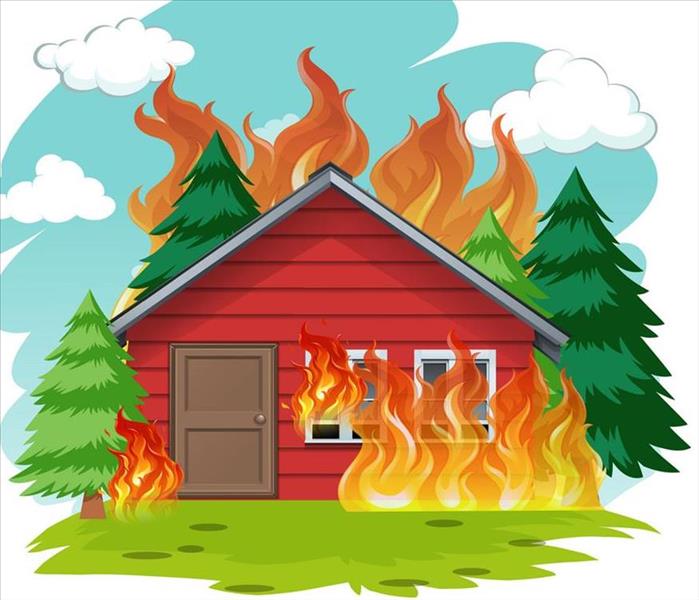Our Fire Damage Technicians Can Manage Different Kinds Of Soot After A Fire In Your Home
11/18/2019 (Permalink)
In the aftermath of a fire in your home, the sight of blackened walls, ceilings, and surfaces can make you feel overwhelmed and unequipped to manage the cleanup. The first reaction is understandable, while the second is wise. Cleanup of toxic fire residues is a job best completed by our Institute of Inspection Cleaning and Restoration Certification (IICRC)-trained and experienced managers and technicians. We match soots to appropriate cleaners and methods for optimal results.
Fire damage cleanup requires evaluation of the types of residues found throughout all spaces in your home. Even rooms far from the ignition site show signs of soot soiling. Depending on the materials combusted and the surfaces coated, we use different cleaners, tools, and methods. Structural components are cleaned on-site, but we might transport some of the contents of your home to our production facility for specialized treatment.
Wet soot occurs when a fire is lower in temperature and smolders because of limited oxygen. SERVPRO sees this kind of soot after rubber, plastics, and oils burn. The residue is thick and sticky, prone to smearing. Odors can be strong and irritating. Successful removal requires a cleaning agent with surfactants and wetting agents applied with agitation to loosen the residue before wiping.
Paper and wood burn fast and hot, leaving ashy soot. Lingering smells are not as dominant nor unpleasant as wet soot. Careful brushing and dry sponging followed by HEPA-filtered vacuuming work well. Fabrics suffering from an ashy buildup respond to foam cleaners applied and removed quickly with a brush.
SERVPRO of North Richland Hills has the trained crews, effective cleaning products, and appropriate equipment for thorough soot removal. Call (817)634-5693 immediately after a fire for an expert assessment and swift resolution of this challenge.





 24/7 Emergency Service
24/7 Emergency Service
